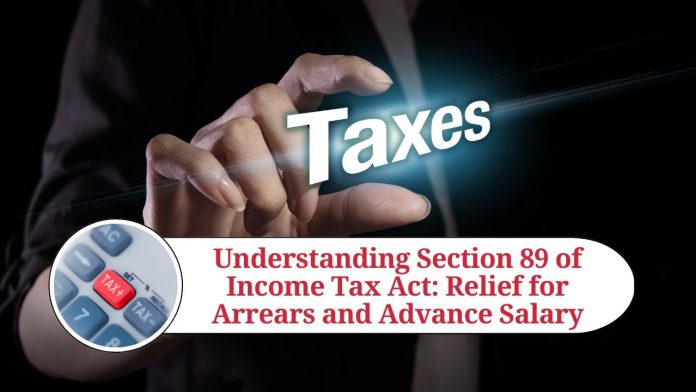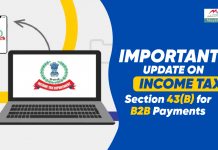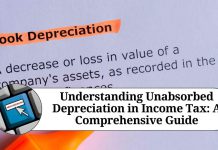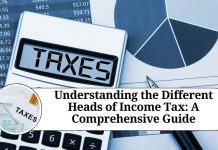Understanding Section 89 of Income Tax Act
Section 89 of the Income Tax Act, 1961 is a provision that helps taxpayers to avoid paying excessive taxes when they receive arrears or advance salary in a financial year. The section allows taxpayers to claim relief on the tax liability that arises due to the receipt of arrears or advance salary in a lump sum. In this blog, we will understand section 89 of the Income Tax Act in detail.
What is Section 89 of Income Tax Act?
Section 89 of the Income Tax Act is a provision that allows taxpayers to claim relief from excessive tax payments when they receive arrears or advance salary in a financial year. The section is applicable only to salaried employees and not to self-employed individuals.
Understanding the Calculation of Relief under Section 89
The relief under section 89 is calculated by comparing the tax liability of the taxpayer with and without the receipt of arrears or advance salary. The difference between the two amounts is then multiplied by the number of years for which the arrears or advance salary pertains to arrive at the relief amount.
For example, let us assume that an employee’s tax liability for the year 2022-23 is Rs. 2,00,000 without considering the arrears or advance salary. However, due to the receipt of arrears or advance salary, the employee’s tax liability for the same year is Rs. 2,50,000. In this case, the difference between the two amounts is Rs. 50,000. If the arrears pertain to the financial year 2019-20, the relief amount will be calculated as follows:
Relief amount = Rs. 50,000 x (30% – 20%) x 3
In this case, the relief amount will be Rs. 15,000.
Conditions to Claim Relief under Section 89
To claim relief under section 89 of the Income Tax Act, taxpayers need to meet the following conditions:
- The arrears or advance salary should have been received in a lump sum.
- The arrears or advance salary should pertain to more than one financial year.
- The taxpayer should have received the arrears or advance salary in the same financial year in which the arrears or advance salary pertains.
- The taxpayer should have paid higher taxes due to the receipt of arrears or advance salary.
Procedure to Claim Relief under Section 89
Taxpayers can claim relief under section 89 of the Income Tax Act by filing Form 10E. The form should be filed along with the income tax return of the relevant financial year. The form requires taxpayers to provide details such as the amount of arrears or advance salary received, the financial year to which the arrears or advance salary pertains, and the relief amount claimed.
In addition to the information provided above, here are some additional details regarding Section 89 of the Income Tax Act:
Applicable Tax Rates
The relief under Section 89 is calculated by comparing the tax liability of the taxpayer with and without the receipt of arrears or advance salary. The tax rates applicable for the purpose of relief calculation are the tax rates that were applicable in the relevant financial year(s) to which the arrears or advance salary pertains. It is important to note that the applicable tax rates may be different for different financial years.
Non-Applicability for Lump Sum Pension Payment
It is important to note that Section 89 relief cannot be claimed on lump sum pension payments. This is because lump sum pension payments are taxed under a separate provision of the Income Tax Act, which is Section 10(10A). However, if the taxpayer has received both arrears or advance salary and lump sum pension payment in the same financial year, the relief under Section 89 can be claimed on the excess tax paid due to the receipt of arrears or advance salary.
Compulsory Requirement to File Form 10E
As mentioned above, taxpayers need to file Form 10E to claim relief under Section 89. It is important to note that filing Form 10E is a compulsory requirement to claim relief under Section 89. Failure to file Form 10E may lead to rejection of the relief claim.
Calculation of Relief for Fraction of a Year
If the arrears or advance salary pertains to a fraction of a financial year, the relief amount will be calculated proportionately for the number of months for which the arrears or advance salary pertains.
For example, let us assume that an employee’s tax liability for the year 2022-23 is Rs. 2,00,000 without considering the arrears or advance salary. However, due to the receipt of arrears or advance salary, the employee’s tax liability for the same year is Rs. 2,50,000. In this case, the difference between the two amounts is Rs. 50,000. If the arrears pertain to the period from 1st April 2021 to 31st July 2021, the relief amount will be calculated as follows:
Relief amount = Rs. 50,000 x (30% – 20%) x (4/12)
In this case, the relief amount will be Rs. 5,000.
Conclusion
Section 89 of the Income Tax Act is a beneficial provision for salaried employees who receive arrears or advance salary in a financial year. By claiming relief under this section, taxpayers can avoid paying excessive taxes on their income. However, it is essential to meet the conditions and follow the proper procedure to claim relief under this section.
Read more useful content:
- section 145 of income tax act
- section 10e of income tax act
- section 9 of the income tax act
- section 94b of income tax act
- section 206aa of income tax act
Frequently Asked Questions (FAQs)
What is Section 89 of the Income Tax Act?
Section 89 of the Income Tax Act provides relief to taxpayers who receive arrears or advance salary in a financial year.
Who can claim relief under Section 89?
Any salaried employee who receives arrears or advance salary in a financial year can claim relief under Section 89.
What is the procedure to claim relief under Section 89?
To claim relief under Section 89, the taxpayer needs to file Form 10E with the Income Tax Department.
What is the time limit to file Form 10E?
Form 10E must be filed within the prescribed time limit, which is before filing the income tax return for the relevant financial year.
Can relief be claimed on lump sum pension payments?
No, relief cannot be claimed under Section 89 on lump sum pension payments. Lump sum pension payments are taxed under a separate provision of the Income Tax Act.
What tax rates are applicable for relief calculation under Section 89?
The tax rates applicable for relief calculation under Section 89 are the tax rates that were applicable in the relevant financial year(s) to which the arrears or advance salary pertains.
Is Form 10E filing mandatory to claim relief under Section 89?
Yes, filing Form 10E is a compulsory requirement to claim relief under Section 89.
What is the consequence of not filing Form 10E to claim relief under Section 89?
Failure to file Form 10E may lead to rejection of the relief claim.
Can relief be claimed for a fraction of a financial year?
Yes, relief can be claimed for a fraction of a financial year. The relief amount will be calculated proportionately for the number of months for which the arrears or advance salary pertains.
Is there any limit on the amount of relief that can be claimed under Section 89?
No, there is no limit on the amount of relief that can be claimed under Section 89. The relief amount will depend on the taxpayer’s tax liability with and without the receipt of arrears or advance salary.




















